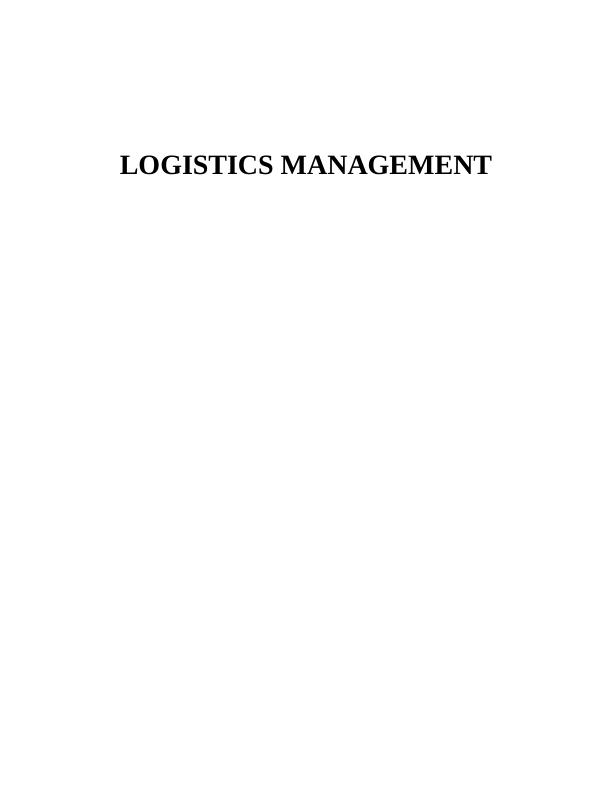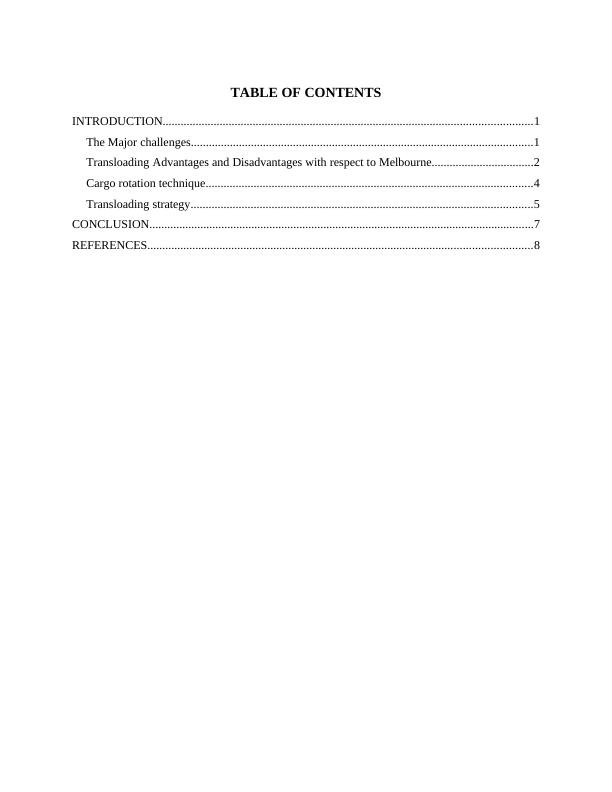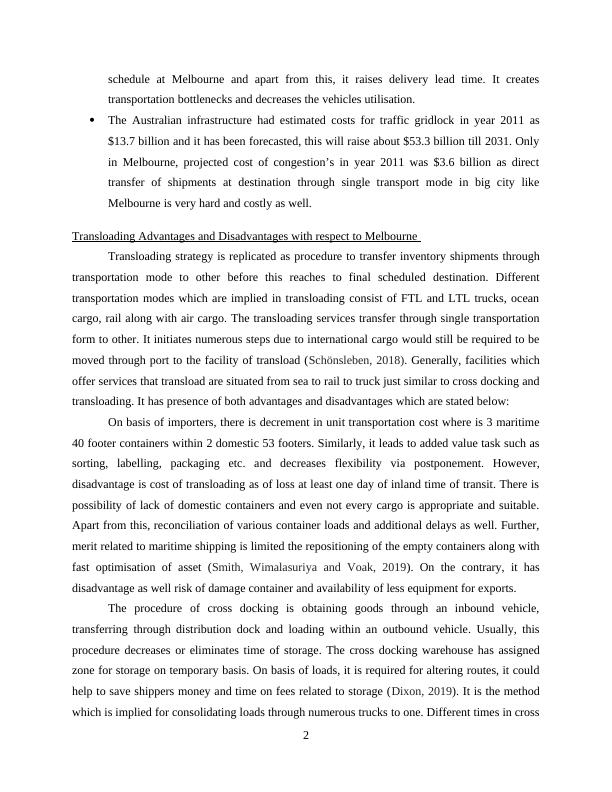Logistics Management: Challenges, Transloading Advantages and Disadvantages, Cargo Rotation Technique
11 Pages3548 Words257 Views
Added on 2022-11-07
About This Document
This report discusses the challenges faced by Melbourne as a port logistics city, advantages and disadvantages of transloading, and cargo rotation technique to minimize empty container movement. It also covers the subject of logistics management and includes references.
Logistics Management: Challenges, Transloading Advantages and Disadvantages, Cargo Rotation Technique
Added on 2022-11-07
ShareRelated Documents
End of preview
Want to access all the pages? Upload your documents or become a member.
Logistics Management Assignment Solved (Doc)
|11
|3209
|27
Melbourne in Australia Case Study 2022
|16
|3906
|20
Logistics Case Study 12: Supply Chain and Port Logistics City
|13
|3620
|194
Logistic and Supply Chain Management
|10
|2454
|410
Port logistics City Assignment 2022
|13
|2758
|20
Challenges Facing Melbourne And Rotterdam Ports Assignment
|4
|876
|129




